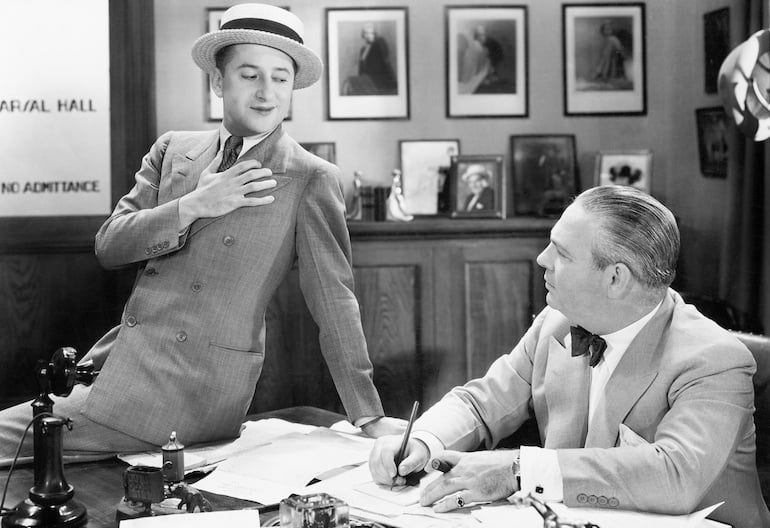Founders have a deep relationship with the business they start and are heavily invested in the dream of its long-term success.
Their role extends far beyond a standard CEO title and the responsibilities that come with the top job in any other type of business. For this reason, cutting the umbilical cord is difficult for several reasons. It can be difficult to find the right person who shares the vision and values. It can be difficult for a founder, who has filled the role of CEO, to step aside and give a new CEO the autonomy to make decisions that impact the future of the business they started.
This raises the important question, when and why should a founder step aside?
The characteristics of the founder and the structure of the business in the early days often influence the future leadership requirements of a start-up. In the case of a single founder business, this founder will almost be either the product visionary or the commercial expert, but rarely both.
The product visionary holds the technical expertise. They are the person closest to the technology, deeply involved in its creation, evolution and ability to solve the customer problem. These start-ups are often marketing-driven in their early stages. Alternatively, a commercial founder CEO will be the person who drives the success of a sales-driven start-up and achieves a strong foothold in the marketplace. Both these CEO archetypes are of equal value and start-ups still need strong leadership of both technical and commercial functions, irrespective of the strength of the founder.
As a business grows, its needs change. A funding event is often a catalyst for the evolution of the CEO’s role, where they take on a new focus outside their key strength of technical or commercial expertise. The CEO role may be required by investors to spend more time on sales, investor relations or developing the team. Some founder CEOs will feel that this takes them too far away from the parts of their role that they enjoy most and are best suited to, or that they are drawn way out of their comfort zone.
These signals suggest that it is an appropriate time for founders and their boards to evaluate the leadership of the business and the CEO’s role. And in many cases, this results in the board embarking on a strategic process to transition the leadership from the founder to a new CEO. In the absence of a suitable successor within the business, the tech community and the founder’s start-up network – peers, investors and advisers – is often the best place to launch the recruitment process.
Recruiting a CEO from outside often leaves the board with a choice between a seasoned CEO who may have a demonstrable track record of scaling a business, or alternatively, up-and-coming talent who may have achieved success early in their career, within a start-up or where they have built up part of a larger business. Identifying the required CEO skillset to help the business achieve its strategy is essential to finding the perfect person.
Some boards may first appoint the proposed CEO in a stepping-stone role such as head of commercial or head of sales and marketing so the recruit can demonstrate the value they bring and gain the trust of their peers.
This won’t always be possible depending on the seniority of their previous role but is a way of reducing the reputational risk should the proposed CEO exit, or have to be exited, for any reason prematurely.
Some boards may ask the proposed CEO to complete a few projects to assess skill and personal fit before making the role official and permanent.
Regardless of the route taken, boards should conduct extensive due diligence on the CEO, check references and where possible speak to those who have worked alongside the CEO to ensure the skills, chemistry, values and working styles are a good fit.
There will be great hopes and expectation for the CEO and the board along with the founder will be looking to this person to drive the business forward. But a healthy dose of realism should be exercised.
The CEO will need time to achieve goals and the board shouldn’t be looking for the CEO to be the instant panacea to solve the woes of the start-up. Nor should be CEO be expected, unless explicitly stated or recruited for the task, to turn around a floundering startup.
Founders also need to consider their own role following a successful transition to the new CEO. They will need to decide whether to continue in a product visionary role or step back from the day-to-day operations by taking on a non-executive role or limiting their responsibility to key accounts or projects. In a non-executive position, the founder needs to adhere to the boundaries and allow the new CEO to lead with their full support. If the founder remains embedded in the business as the product visionary, clearly defined responsibilities will be very helpful, along with a delineation between this and their presumed board role.
Letting go is hard for founders. Knowledge transfer is important and facilitating close connections between the new CEO and the team will ensure the business remains cohesive. Moving forward requires evolution and the founder to back the new CEO completely so the team respects and understands a new strategy for taking the company to the next level of growth.
- Benjamin Chong is a partner at venture capital firm Right Click Capital, investors in bold and visionary tech founders.




















Trending
Daily startup news and insights, delivered to your inbox.